The weekly newsletter of the México Solidarity Project
April 7, 2021/ This week’s issue/ Bill Gallegos, for the editorial team
Art and culture have always been powerful bridges for building international solidarity, and that’s been especially true for building links between anti-imperialist activists from México and the United States, particularly between the Chican@-Mexican@ population in the US Southwest and sisters and brothers in México.
In this special art and culture issue of the México Solidarity Bulletin, we feature a poem from poet Joe Navarro, a longtime fighter for Chican@ Liberation, and the work of Jimmy Centeno, the gallery curator at CASA 0101, an outstanding theater and cultural center in Los Angeles.
Art and culture often represent the rhythmic soul of our social movements. We hope that our readers will find that rhythm in Joe’s poem and Jimmy’s pieces — from his latest exhibition — that we so proudly share with you this week.
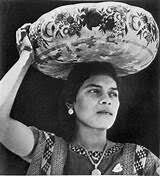
“La cultura cura dicen Los poetas, los cantantes, Los escritores, los musicos.”

Most of Chicano artist Jimmy Centeno’s multi-media work tilts philosophical and carries the influence of story tellers from the Global South and Mesoamerican mythology. His art attempts to narrow the distance between borders, color/race, and class, to bridge and stitch together our differences. Jimmy also participates in international explorations of philosophy and aesthetics. México Solidarity Project co-founder Bill Gallegos recently interviewed Jimmy about his latest Los Angeles exhibit and more.
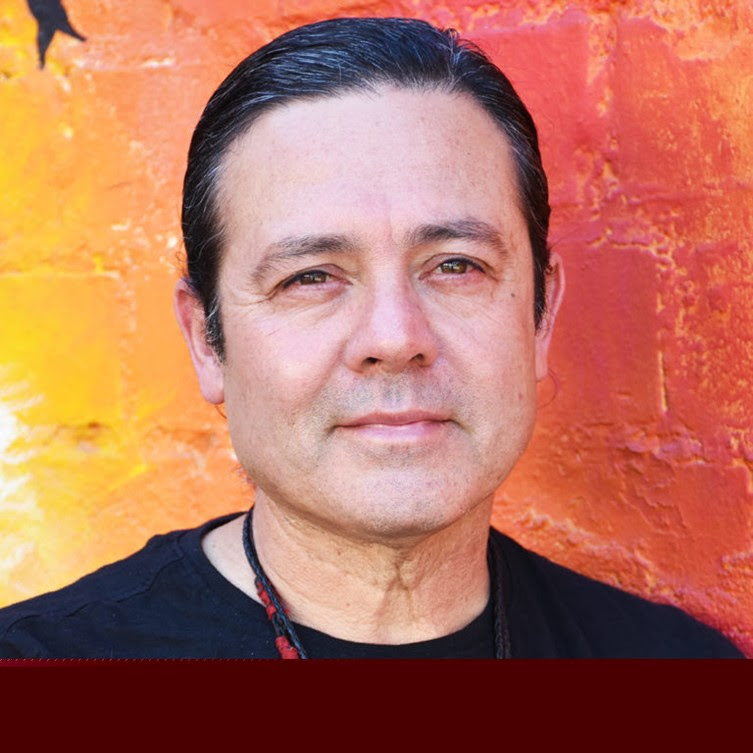
Bill Gallegos: How has Mexican history and philosophy influenced your art?
Jimmy Centeno: I am a worker above being Chicano, Mexican, Latin American, an artist, and so on. I’m also all of those identities at the same time. But in terms of things Mexican, my first influences began with mother’s homeschooling on Mexican history through family stories. I was in constant contact with the culture and the people. To me, each person is history. An example is my Una Mochila Sospechosa (“A Suspicious Backpack”), a work inspired by a recent art collaboration with activist and artist Mario Ávila from Guatemala. In the 1980s, during the civil war in Guatemala, the Guatemalan military stopped Mario. They suspected he might be a guerrillero because he was wearing a backpack. They told him that “all guerillas wear backpacks”!
My artwork reflects Mexico’s Indigenous cosmology, a de-colonial philosophy at odds with modernity, part of a long tradition of resistance against western imposition. My work centers the marginalized, the workers, the dispossessed and racialized communities excluded from history. I find Miguel León Portilla’s translations of Nahualt literature an inspiration: history told from the indigenous point of view. I am interested in the polysynthesis in Nahuatl and Mayan language. They carry rhythm and movement. But not everything in my work reflects resistance and struggle. We have much to be proud of and much to celebrate: the creative process, the mythical and the mystical in our cultura, the beauty of the land.
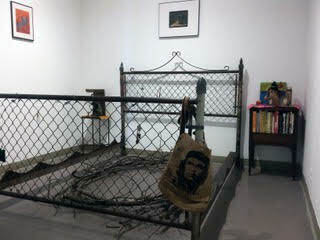
What Mexican artistic traditions and techniques do you draw from?
The Mexican mural aesthetic, in particular Los Tres Grandes, David Alfaro Siqueiros, José Clemente Orozco, and Diego Rivera. In the liberatory content and concern for all of humanity in Siqueiros’s work, in Orozco’s focus on the fetishism of power, elitism, and the barbarity of wars, and in Diego Rivera’s rendition of workers, I see links to my own class background and to all workers of the world. You can see aspects of Uruguayan artist Joaquín Torres-García in my work. He explored artistic traditions in South America’s pre-Hispanic cultures, opening the way for a new consciousness of artistic and cultural identities in las Americas.
I also incorporate traditional Mexican organic art-making techniques and use of earthly materials, as well as the playful Mexican poetic custom of employing words with double meaning of words, as reflected in my Un Ojo Cerrado y Tres Noches de Amor.
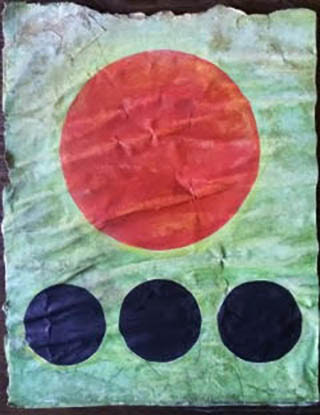
What do you see as the relationship between Mexican art and the art produced by Chicanos in El Norte?
Chicano Art comes in many strata, one bourgeois, porous in themes, and others closer to adornments for the establishment. Then there is socially conscious art that amplifies what it means to be Mexican in the US. Aztlán is not just a myth on the origins of Tenochtitlán. It is an Indigenous cosmic link beyond western concepts of being and existing.
Mexican art reminds Chican@s here in el Norte about our Mexican heritage. And Chican@ art reminds Mexican artists about our reality in El Norte. But Chican@ and Mexican art have much in common in addressing questions of migration/class struggle/history/revolution/ justice/solidarity/feminism. Mexico’s art has a strong current of internationalism, something that has not recently been as strong in Chican@ art. I hope my art can help rekindle solidarity with Latin America and the rest of the Global South.
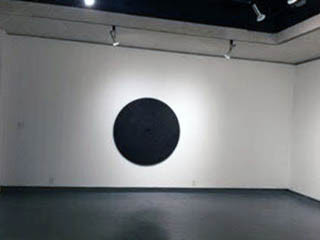
You’ve worked a lot with African American artists. What do you see as the connection between black and brown in the art world?
The history of struggle leads both to create art deeply infused with the spirit of justice and the weight of our determination for a just world. That makes for a very strong link between our communities.
Do you make art as a contribution to the movement for social change?
In my current exhibition, you can see conceptual artwork dedicated to Karl Marx, a reference rarely seen in any contemporary art. The capitalist culture of individualism makes many people unconscious of their working-class backgrounds, and that undercuts the possibilities of solidarity across the entire class, regardless of race, gender nationality, and other differences. I hope my art can bring an awareness that can lead to a re-examination of the role of the working class in society — and give hope for transformation.

The Chicano poet, creative writer, and teacher Joe Navarro has been a lifetime activist for human and political rights and social justice for oppressed people. People’s struggles for dignity and self-determination, for liberation and peace, for democracy and preserving our Mother Earth, continue to inspire his poetry. A recent example.
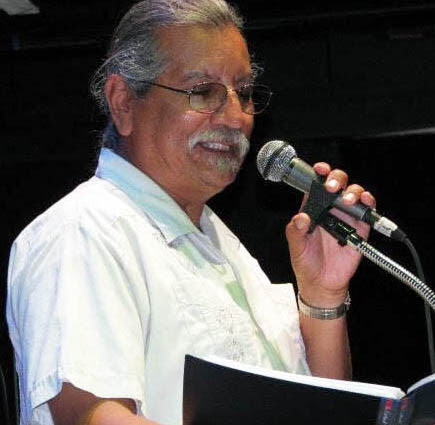
2020 Was a Horror Poem
2020 was a horror poem
Un poema en desarollo
En la oscuridad de la mente
Darkness ruled day
Dark thoughts abound
It was the cumulative
Conjuncture of “Himism”
Compounded by a
Coronavirus, y otra enfermedad
A five-hundred year old sickness
That emerged from the pores
Of subjugation and hatred
El colonialismo, la enfermedad
De la ilusión que una raza
Puede ser superior a otra raza
That seemingly incurable disease that
Recently fermented over four years
Spread like wildfire throughout the world,
Throughout the nation, exacerbated
By bigotry and hue-hatred
Coronavirus spread in US society
Like a bad metaphor that took lives
La muerte llegó buscado a
La gente más vulnerable
La gente sin defensa,
Como la policía, asaltando, asesinando a
La gente sin defensa
The year of medical science
Disagreeing with rumors, innuendo
Ignorance and ruthless careless politics
Personal freedom smothered
In red-white-blue disease
And him, yes him the billionaire
Who may be broke, the liar
The cruel heartless villain
Whose first words declared
Mexicans as drug dealers, rapists and murderers
And who hated on Black people
Who called murderers heroes
Yes, him, who denied the sickness
And got sick, treated with
Presidential billionaire health care
Declaring, See, I told you it’s okay
While 300,000* people died
In his backyard, without
Presidential billionaire treatment
Yes Spring and Summer 2020
Got hot alright, as people
Hit the streets, because people
Got sick and tired of
State approved murder of
Black, Brown and Native people on video,
Sickness, no jobs, no school, violence
Extended because he lied
Physical illness and social illness
Brewed together in death cool-aid
Pero la esperanza abrazó a la gente
Una visión para un futuro mejor
Despertó a la gente
Muchos de todas razas marcharon,
Gritaban por justicia y dignidad
Decían, ¡Basta Ya! queremos
Una vida mejor en este país
Lucharon y votaron
They struggled and voted
For a cure to end the madness of 2020
¿Saben que? la cultura cura, dicen
Los poetas, los cantantes, los escritores, los músicos
Llenaron el cielo con pensamientos
De justicia, igualdad, dignidad y paz
A rainbow for a just society
And human health over profits
Jobs, school and familia
Filled the skies with hope
The old year retires, weary and worn
And the new year, 2021, arrives
Fresh, energetic, with people’s aspirations
A new year, hopefully, will be
A metaphor for things to come
*Now more than 500,000 people have died.
© 2020 Joe Navarro

Recent news reports and commentaries, from progressive and mainstream media, on life and struggles on both sides of the US-México border.
ynthia Porter, “The long legacy of Lazaro Cardenas”: AMLO, Sunday Vision. On the 50th anniversary of the death of former Mexican president Lazaro Cardenas, current president Lopez Obrador says the moral principles of Cardenismo can still help México become “a country that excludes no one.”
Manuel Pérez Rocha Loyo, La 4T y los derechos de los inversionistas extranjeros, La Jornada. Para que México despierte de la pesadilla neoliberal y poder garantizar la soberanía nacional es imperioso reformar sus TLC y TBI.
Mexican electoral court: President can’t praise achievements, Associated Press. Mexico’s electoral tribunal has ruled that López Obrador cannot talk about his administration’s achievements during the campaign leading up to June 6 mid-term elections
Rose Egelhoff, Family service agencies overwhelmed by flood of migrant youths, México News Daily. Agencies have seen a surge of migrants under the age of 18, forcing authorities to send the youths to nonprofit shelters.
Sam Biddle, LexisNexis to Provide Giant Database of Personal Information to ICE, Intercept. The company has signed a contract with an ICE division playing a key role in deportations.
John Lindsay-Poland, Mexican Police Who Massacred Guatemalan Migrants Get Their Guns from the US, NACLA. Existing mechanisms for controlling the gun trade remain ineffective.

The Mexico Solidarity Project brings together activists from various socialist and left organizations and individuals committed to worker and global justice who see the 2018 election of Andrés Manuel López Obrador as president of México as a watershed moment. AMLO and his progressive Morena party aim to end generations of corruption, impoverishment, and subservience to US interests. Our Project supports not just Morena, but all Mexicans struggling for basic rights, and opposes US efforts to undermine organizing and México’s national sovereignty.
Editorial committee: Meizhu Lui, Bruce Hobson, Bill Gallegos, Sam Pizzigati. We welcome your suggestions and feedback. Interested in getting involved? Drop us an email!
Subscribe!
Web page and application support for the México Solidarity Project from NOVA Web Development, a democratically run, worker-owned and operated cooperative focused on developing free software tools for progressive organizations.